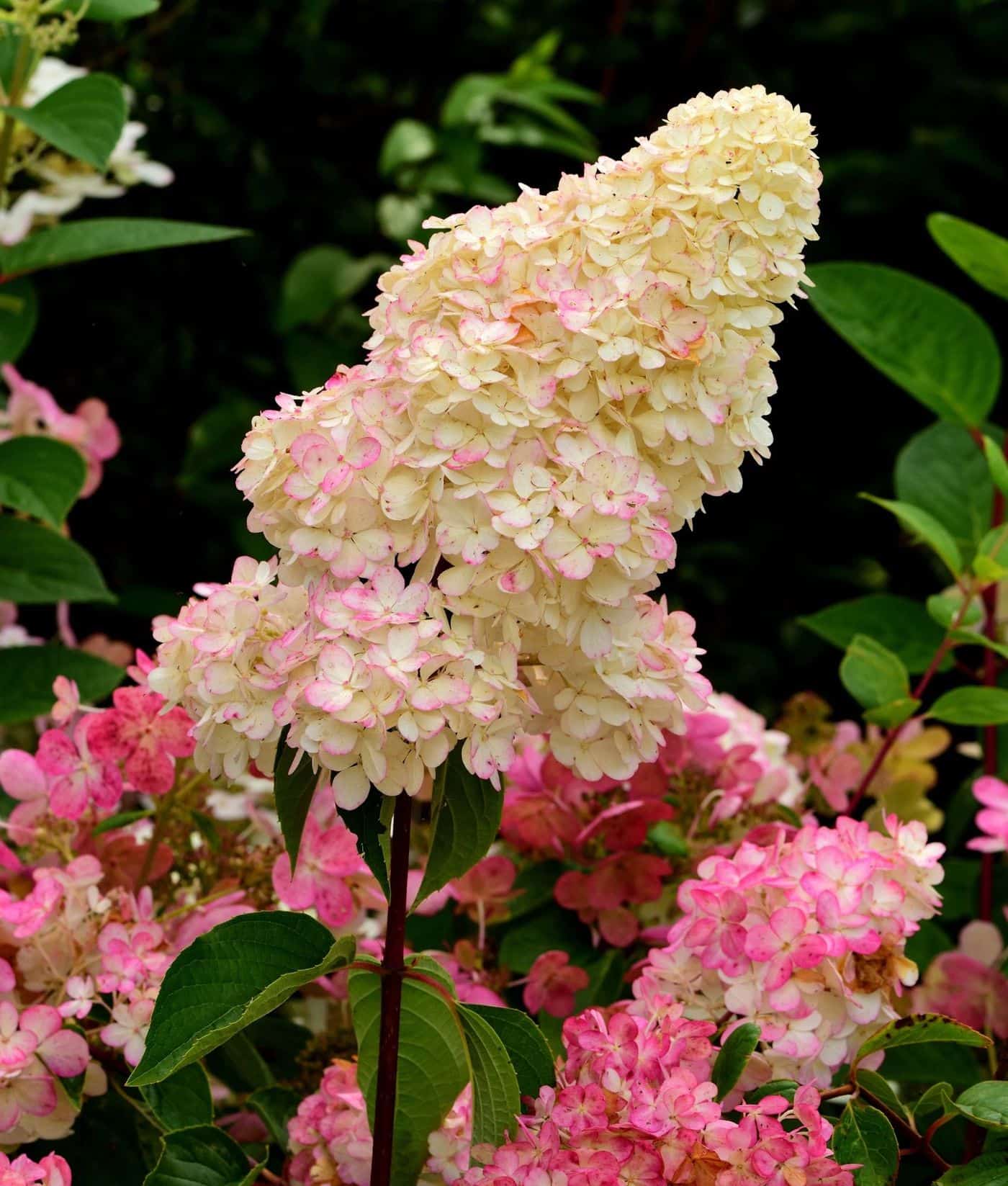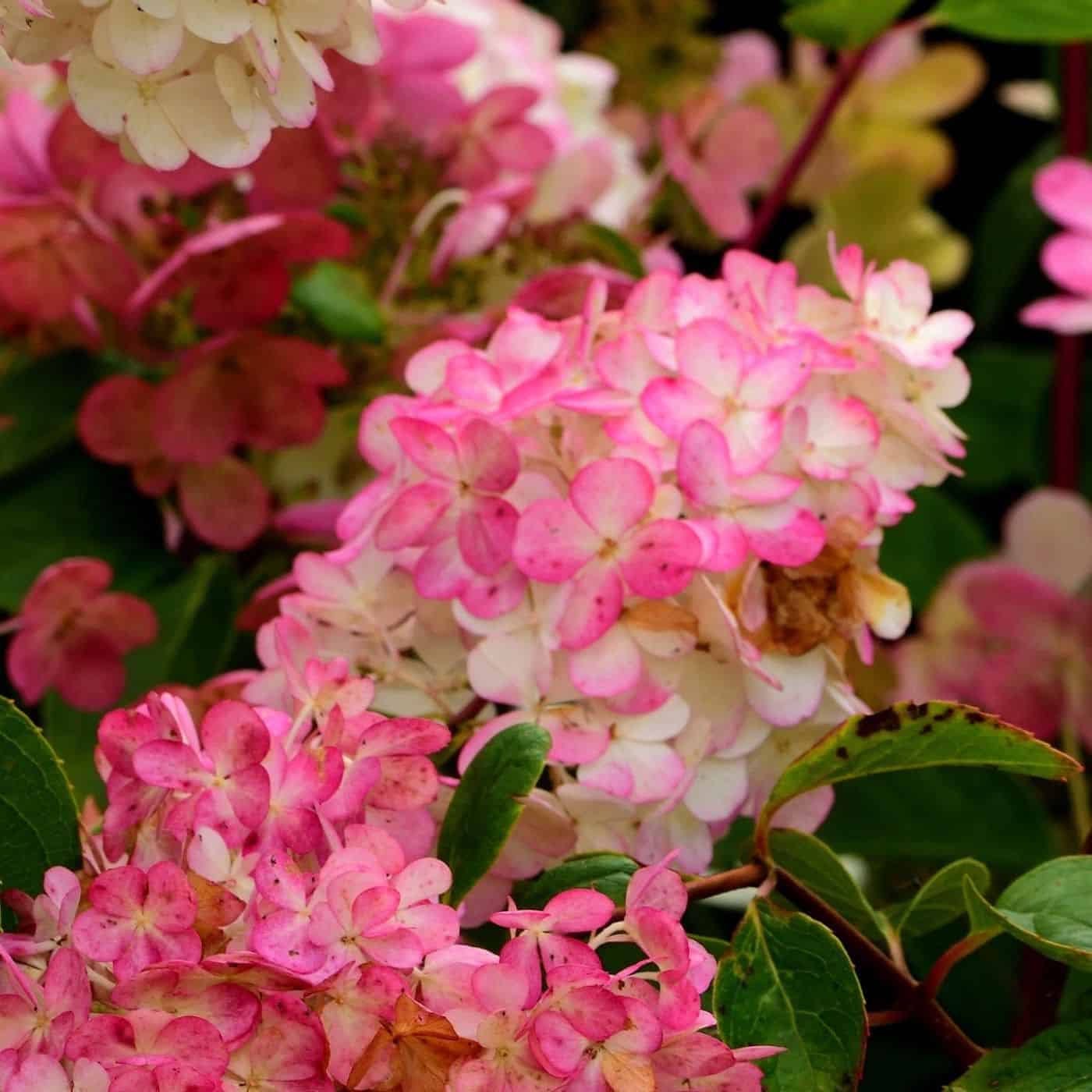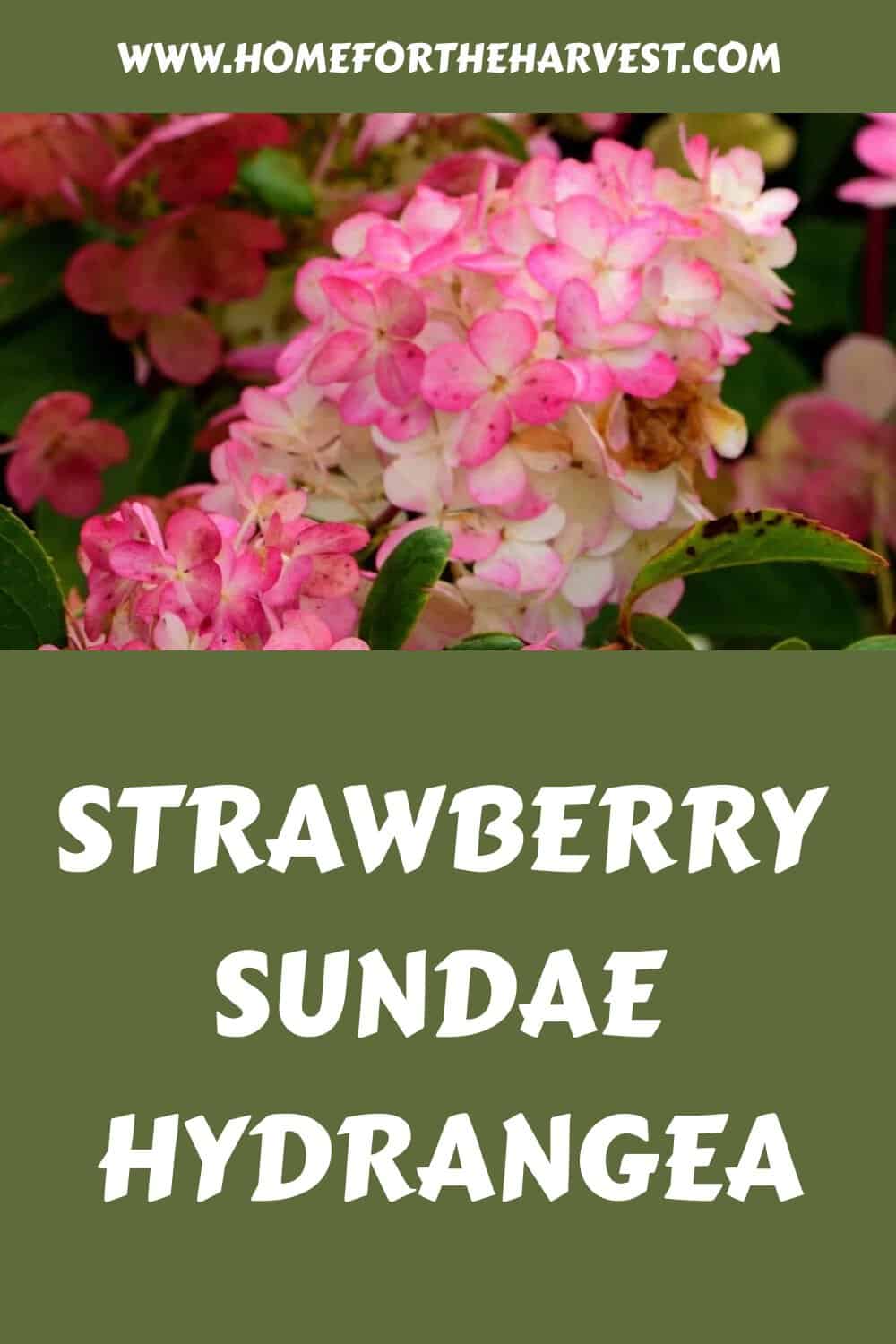Strawberry Sundae hydrangea plants are known for their vibrant flowers. The blooms begin the season as pure white and begin to change colors from soft pink to deep red throughout the summer. Caring for Strawberry Sundae panicle hydrangeas includes medium watering and partial to full sun. These pollinator plants are lovely as a single shrub but can also be planted in long rows for a stunning flowering hedge.
Strawberry Sundae hydrangea basics
Strawberry Sundae Hydrangea is a cultivar of panicle hydrangea bred by First Editions® Plants. This compact variety produces masses of white flowers that mature to a warm pink color as summer progresses. Strawberry Sundae is beautiful in the landscape, and the bloom clusters also make lovely cut flowers for bouquets and floral arrangements. This low-maintenance flowering shrub also attracts beneficial creatures such as butterflies.
Strawberry Sundae hydrangea gained its name from the flowers this plant produces. These gorgeous blooms have lots of small white flowers that seem almost to be dyed a vibrant pink color. The blooms often begin as white and begin to mature into the vibrant pink and sometimes deep red that has earned them their name. This color change happens throughout the season as the flowers are exposed to sunlight.
On some Strawberry Sundae hydrangeas, the blooms have more white than pink, while others will have the opposite. The color also tends to become more intense later in the year. Regardless, the beautiful and vibrant coloring of the blooms gives stunning color to any yard.
First Editions® Strawberry Sundae® Panicle hydrangea is a compact hydrangea when compared to its older sibling the Vanilla Strawberry hydrangea. The smaller Strawberry Sundae shrubs can mature to reach four to five feet in height. These shrubs will expand to cover three to four feet in width. This makes for a nice-sized plant. Because the vibrancy and size of the plant may seem flamboyant and attention-seeking, you might consider placing the Strawberry Sundae Hydrangea next to trees or other large plants to help it blend and fit in a little better.
Buying Strawberry Sundae hydrangea plants
The Strawberry Sundae® Panicle Hydrangea is a First Editions® cultivar of panicle hydrangea. Look for them at garden centers and nurseries that stock First Editions.
How to plant Strawberry Sundae hydrangea
Planting Strawberry Sundae hydrangeas in the early spring or during the fall season is the best. This will allow them to properly grow and mature during the summer heat.
Strawberry Sundae hydrangeas need a planting location in partial sun to full sun. This means the plants should receive at least six hours of sunlight daily. The plants may benefit from some afternoon shade in hot climates but can typically grow in full sun all day in most locations.
Dig a wide, shallow hole for the plant. The hole should be twice as wide as the plant pot but no deeper than the soil inside the plant pot.
Pull the nursery pot planter off the root ball. Carefully loosen up any large roots visible on the outside of the root ball. Place the plant inside the hole, making sure the level of the potting mix around the stem is at the same height level as the soil surrounding the planting hole. Backfill the hole with the soil that came out of the hole. Do not bury the hydrangea plant any deeper than the original soil level inside the plant pot.

Plant care for Strawberry Sundae hydrangea
Caring for hydrangeas is similar to the basics for growing most hydrangeas. Strawberry Sundae Hydrangeas need a “medium” level of water. Begin by allowing the regular sprinkler system to water your yard to water the Hydrangeas. During hot days and months, consider turning the sprinklers back on in the afternoon or watering them with a hose to give them all the moisture they need.
Hydrangeas need to receive the right amount of sunlight and water to survive. In order for this plant to survive in more desert-like climates, it will likely need more water. One difficult factor to accommodate is the lack of sunlight and warmth. Strawberry Sundae Hydrangeas will have a hard time growing and thriving in areas of extreme cold and low sunlight.
Fertilizer for Strawberry Sundae hydrangea
Strawberry Sundae Hydrangeas are generally fed in the early spring and sometimes in mid-summer. Different fertilizer products have different guidelines for how much and how often to apply the fertilizer to the soil around the plant.
As with most plants, you must be careful about how much and how often you fertilize your Strawberry Sundae Hydrangea. Too little fertilizer combined with naturally poor soil means your plants will develop paleness in their leaves and poor, slow growth.
Pruning Strawberry Sundae hydrangeas
Due to the growing season of this summer-flowering shrub, it should be pruned near the fall or winter. That said, it is also important to remember that many varieties of Hydrangeas, including Strawberry Sundae Hydrangeas, do not have to be pruned every year. It is time to prune the shrub if it begins to decline in the number of flowering buds or begins to grow too much. Proper pruning can enhance and beautify the flowering blooms.
Common pests that attack Strawberry Sundae hydrangeas
Hydrangeas can be attractive to pests, including aphids, spider mites, slugs, and Japanese beetles. Fortunately, recognizing them is fairly straightforward. These pests are all possible to conquer if you have the right tools.
One is to wash the leaves and stems down with soapy water. Another is to treat the whole plant with an organic insecticide. As always, follow the instructions on the specific product you choose.
Diseases affecting Strawberry Sundae hydrangeas
Strawberry Sundae hydrangeas, being panicle hydrangeas, are less prone to disease than many other varieties. They are somewhat susceptible to powdery mildew, bud blight, leaf spot, and bacterial wilt. Most of these are caused or exacerbated by overwatering, too much shade, or too little ventilation within your plant.
One way to treat disease is to decrease watering and increase air circulation around the plant. Alternatively, transplant it to an area with better soil drainage or more air movement. Commercial organic fungicides also tend to be effective in treating fungal infections. Follow the application instructions and frequency guidelines listed on the product you choose.







